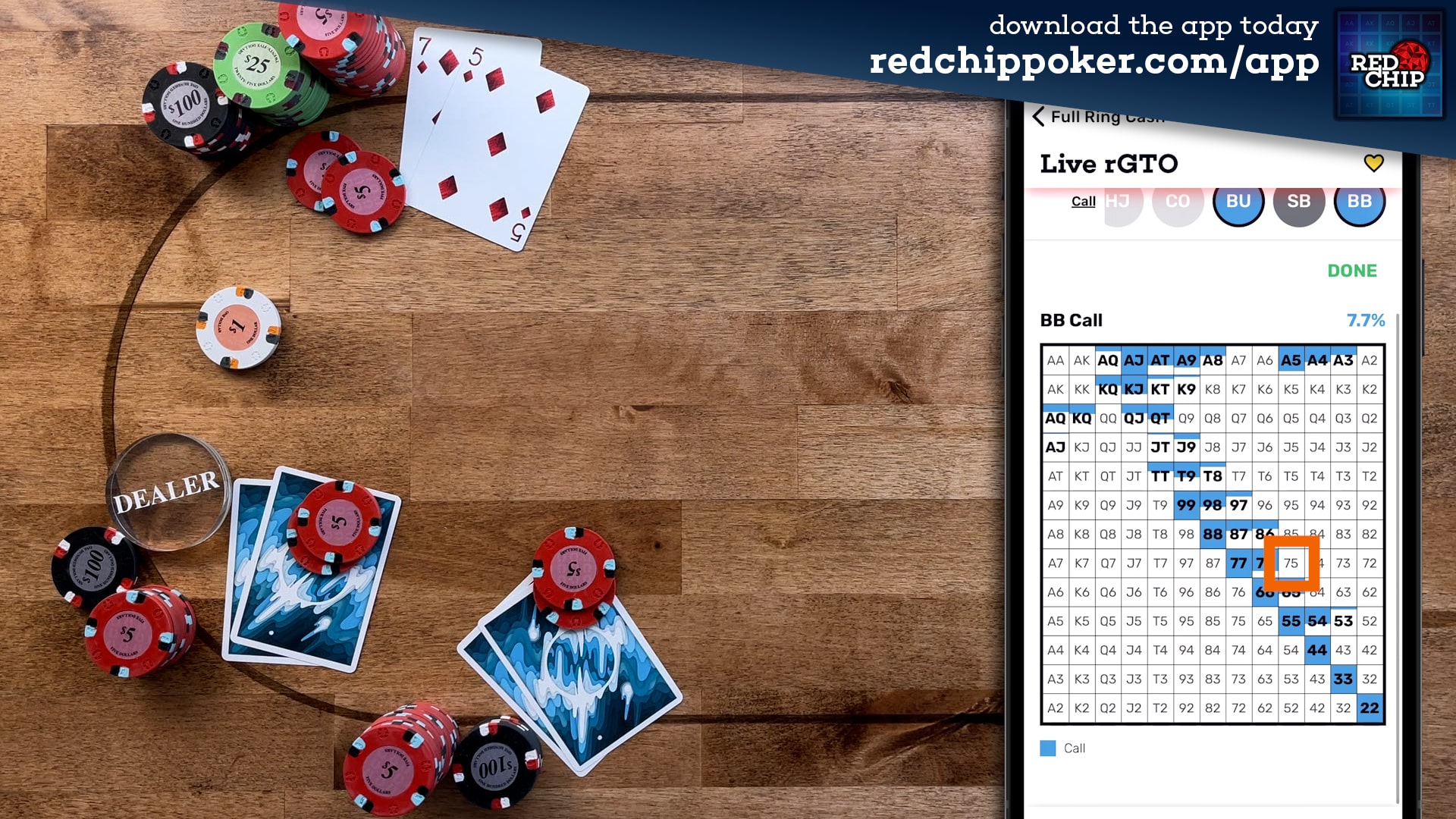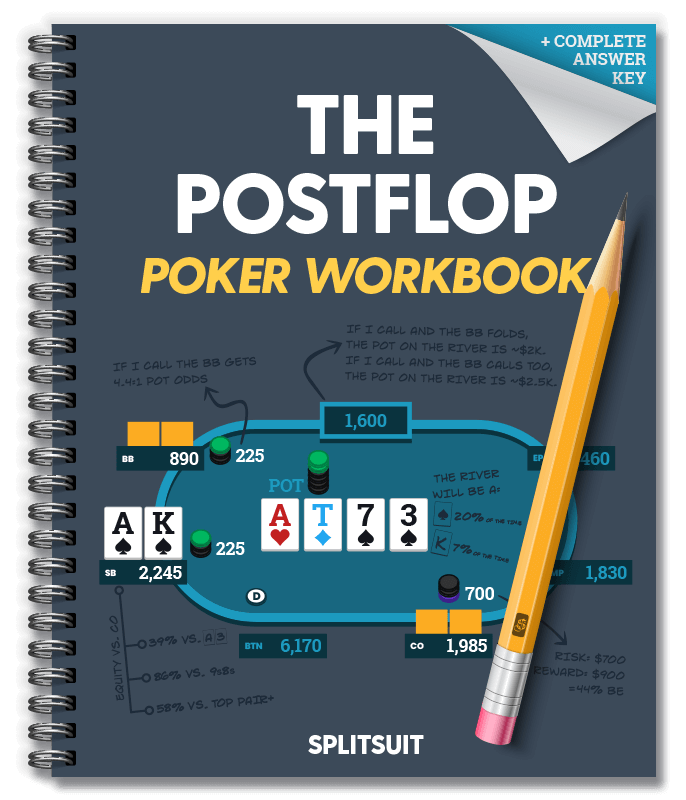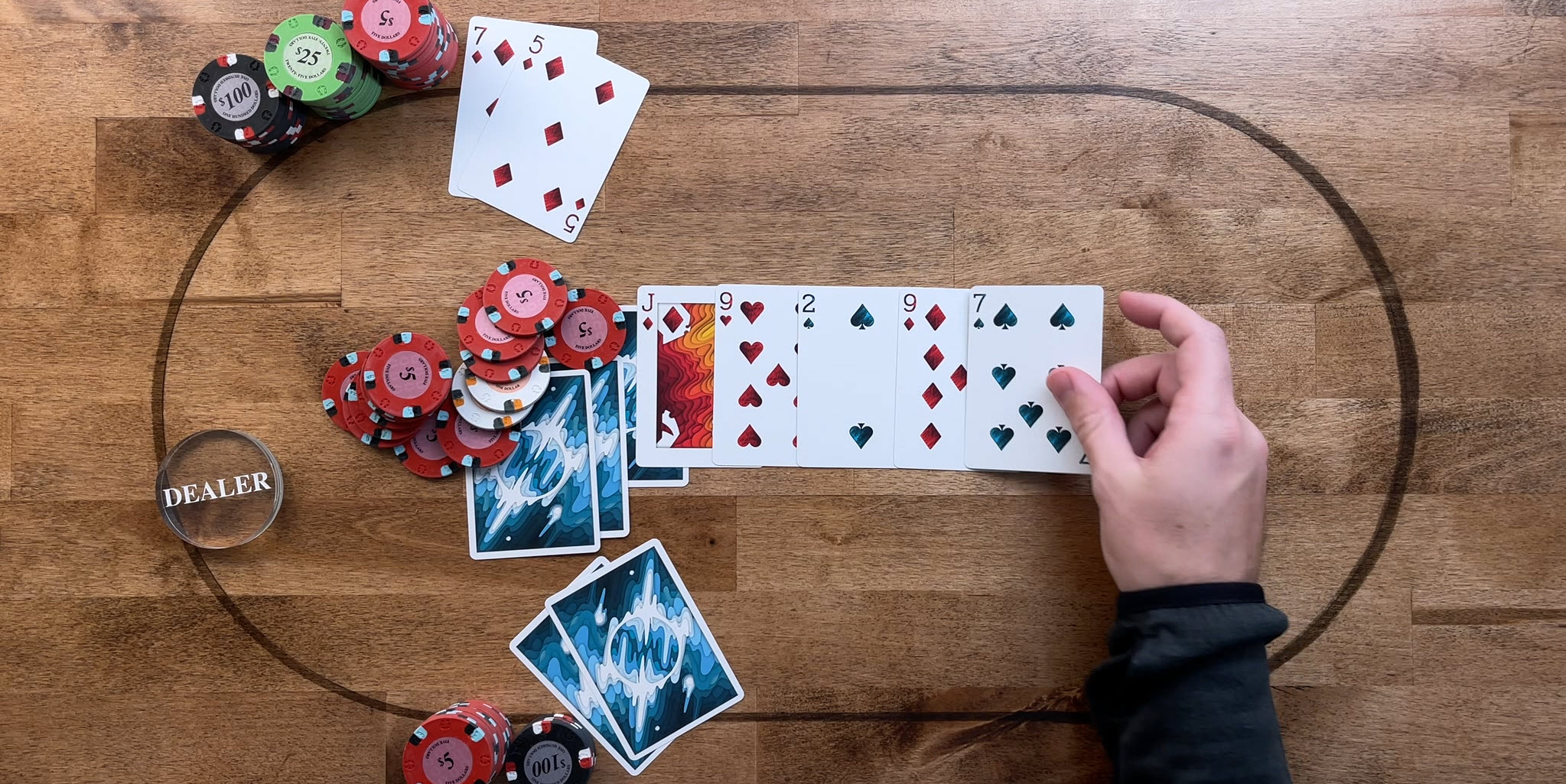It’s actually quite common to find spots where your opponent has a capped range on the river.
But most players are totally oblivious to this.
So let’s review a spot where villain is clearly capped on the river and our busted flush draw ends up catching a bit of showdown value. Push play and/or continue reading.
This is a hand I played at $2/$5 at Harrah’s Cherokee in North Carolina. The room is incredibly strict against recording live poker VLOG footage, so we don’t have any for this one.
Preflop With 7♦5♦
The CO min-raises to $10, the button calls, and the SB folds.
This is a very standard defend given the small open-raise size, even though you won’t find 75s as a defend if you are using The GTO Poker Ranges App. Keep in mind that the App’s live GTO solve uses a 4bb OR size, which is more common in live cash games.

The main information is that the button just got called for their table change and has their stack racked up. And the CO has a great mustache, but their strategy doesn’t match the greatness.
Flop A BDFD
The flop of J♦ 9♥ 2♠ totally misses us.
But it’s better to have at least a BDFD (backdoor flush draw) than nothing at all!
I check, the CO checks (phew!), and the button folds so they can move over to the next table.
I have no idea why the button bothered calling preflop if they were just going to do that, but you gotta love live poker cash games sometimes, lol.
Turn A Flush Draw
The turn is an interesting 9♦.
This pairs the board, but gives us a flush draw to start working with.
I opt to fire the turn for $20 for a few reasons:
- I think this player would have bet the flop with a 9x, Jx, QQ+ type hand. This means the turn card should miss their range quite often and leave them with 1 or 2 naked overcards most of the time.
- If they fold their equity, that’s fine, as we win a pot with nothing but 7-high.
- If they continue, they likely cannot contend with many river bets.
At first glance, you might think “this is such an obvious bet – of course we fire when we pick up a flush draw!”
But the issue is that most players end the conversation there.
They have zero plan for the river.
So let’s think about possible river options once the CO calls the $20 bet (which they do).
Crushing A Capped River Range
There are essentially 3 major buckets of river cards that we’re concerned with:
- Flush Fillers (any diamond)
- Overcards (any Q, K, or A)
- Bricks (pretty much the rest of the deck)
Well against a capped river range that’s mostly other flush draws and hands with 1 or 2 overcards in them, the flush fillers are easy value bets. They might get bet/folded sometimes, but they are certainly value bets.
The next bucket contains overcards. These are interesting because you might consider overbetting since a.) it looks like you could easily have a 9 and b.) they might melt away. Of course, know thy opponent before mindlessly overbetting and getting inelastically snapped off by every rivered pair!
The rest of the deck are bricks (numbers like this are included in the RCP poker cheat sheets). Keep in mind that bricks can be chunked into two parts: bricks that miss both of you often and bricks that you improve on like the 7♠ or 5♥.

Are You Regularly "Lost" Postflop?
I've strengthened my postflop strategy immensely over the years by studying the right concepts, being able to closely estimate outcomes, and understanding the technical aspects of the game. My new Postflop Poker Workbook runs you through the same exercises that I've been doing and comes with a complete answer key plus a companion video course. Get your copy today and start seeing postflop more clearly.
Rivering a pair here is interesting since the current plan is pretty much to fire at varying large sizes across the wide swath of the deck.
However, what does firing the river for $50 into $72 accomplish when you river a weak pair?
It’s our river pairs where we can switch gears and get into a comfortable check/call mode.
Unless you think villain is likely to hero-call with Ace-high or King-high on the river, allowing those hands to make betting mistakes tends to be more lucrative.
River Third Pair
The river is the 7♠.

I keep with the plan to check when rivering a pair.
Villain then thinks.
And thinks.
And thinks.
But ultimately ends up checking-behind and showing K8o.
How do they not fire the river here!?
Oh well. Ship a little $72 pot our direction, but I do wish it were bigger.
Poker Hand Recap
In these situations, most players tend to play preflop, flop, and turn the same.
But the proactive thought process when firing the turn is the key differentiator between solid players and the rest of the player pool.
Keep in mind that the river plan (and ultimately, river play), is wrapped around villain’s range being capped given the way they would c-bet and also continue against a turn bet.
If you thought villain would check the flop with 9x hands, then the extra addition of trip hands on the river can screw up the entire plan massively.
If you thought villain would fold Ace-high or King-high hands on the turn that didn’t have some additional equity (like AQ with two overcards, or KT with a gunshot), then it makes it tougher to find a ton of hands that might fold when we barrel bluffs on the river bricks.
As always, make your assumptions and run the play you think is highest EV.
In this case, I like the line. I just wish villain had fired that river instead!
